#national gallery Madrid
Explore tagged Tumblr posts
Text
« Women were born to serve men »



Salome with the Head of John the Baptist, c. 1609, by Caravaggio (Madrid)
#caravaggio#painting#art#classical art#salome#john the baptist#royal palace#national gallery Madrid#bodies & shadows#masterpiece#serve men#feminist#women are from venus#death to patriarchy#equality#women’s rights#pro choice#god is a woman#warriors#4b movement#4b#your body my choice
35 notes
·
View notes
Text
“From birth I was cast upon you; from my mother's womb you have been my God.
Do not be far from me, for trouble is near and there is no one to help.” - Psalm 22
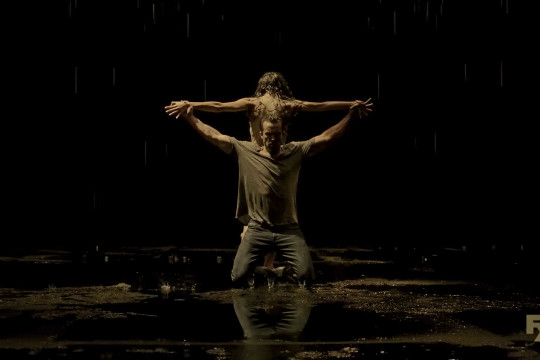




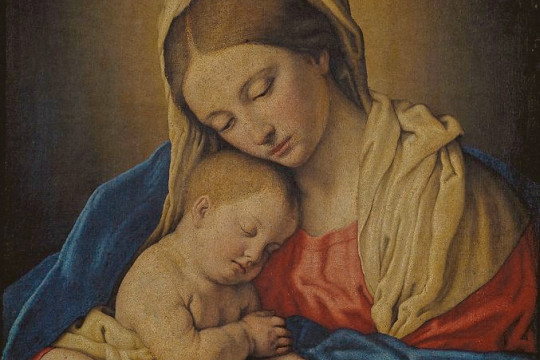
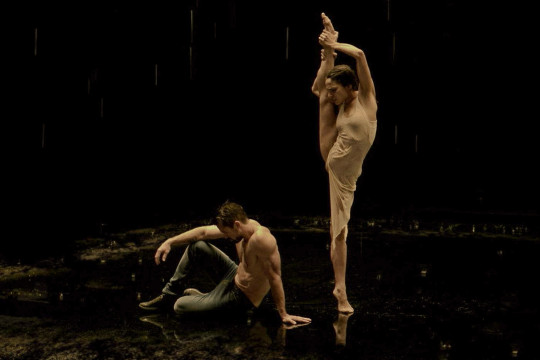

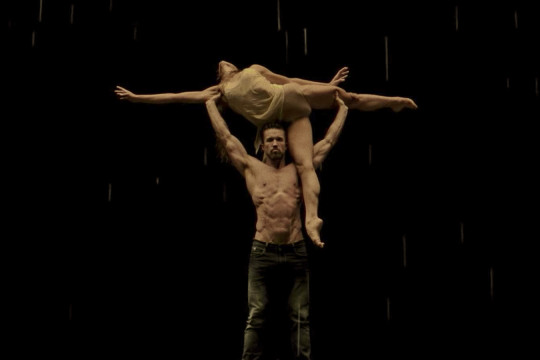

1. Velázquez, Diego. Christ Crucified. 1632, Museo Del Prado, Madrid.
2. Barbieri, Giovanni Francesco. Apparition of Christ to the Virgin. 1628 - 1630, Civic Art Gallery, Cento.
3. Sassoferrato, Giovanni Battista Salvi. Madonna and Child. 1625 - 1700, Louvre Museum, Paris.
4. Story, William Wetmore. The Angel of Grief Weeping Over the Dismantled Altar of Life. 1894, Rome.
5. Bloch, Carl Heinrich. The Crucifixion. 1870, Museum of National History, Copenhagen.
6. “Mac Finds His Pride.” It's Always Sunny In Philadelphia, season 13, episode 10, FX Network, 7 Nov. 2018. Writ. Rob McElhenney and Charlie Day. Dir. Todd Bierman.
#im sure someone else has already done this#but#here's more#it's always sunny in Philadelphia#always sunny#iasip#mac mcdonald#mac sunny#mac finds his pride#there is one common theme in all the images i chose#and that is#helplessness#rob mcelhenney#rcg
933 notes
·
View notes
Text
SET SIXTEEN FINAL - ROUND FOUR


"Unfinished Painting" (1989 - Keith Haring) / "Saturn Devouring His Son" (c. 1819–1823 - Francisco Goya)
UNFINISHED PAINTING: A self-portrait left intentionally "incomplete". I'm roughly the same age as Haring was when AIDS ended his life and I can only begin to imagine how it must feel to know that your life has been cut short a third of the way through. I get such a lump in my throat each time I look at this. (louisianna)
SATURN DEVOURING HIS SON: This painting already gave me the heebie jeebies a bit but I got the chance to see it in person a while back and WOW. I was just filled with such deep dread and discomfort standing in the gallery, like there was just a gaping hole in my gut. The detail that really was the cherry on top of the experience is honestly how goopy his eyes are. You feel like he's staring right at your soul to be honest. Beyond terrifying (100000/10 would recommend) (broke-on-books)
("Unfinished Painting" is an acrylic on canvas painting by Keith Haring. It measures 39 x 39 in (99 x 99 cm) and is located in National Portrait Gallery, in Washington DC. This was Haring’s last painting and it was intentionally left incomplete.
"Saturn Devouring His Son" is a 1819-23 mixed media mural transferred to canvas (originally painted on the wall of his dining room) by Spanish artist Francisco Goya during one of the darkest periods of his life. It measures 143.5 cm × 81.4 cm (56.5 in × 32.0 in) and is displayed at the Museo del Prado in Madrid.)
#art that fucks you up tournament#polls#atfyu polls#id in alt text#cw eye contact#cw nudity#cw blood#cw gore
55 notes
·
View notes
Text










My name is Diego Alonso Vignon, but my artistic name is Diego A. Vignon. I was born on the 1st of August 1993, in Mexico City. When I was barely one year old, my parents, my siblings, and I fled from the police, living in hiding in rural areas on the shores of Lake Chapala until I was thirteen years old, marking my life forever. At the age of sixteen I began to run away from home on several occasions avoiding school responsibilities and traveling through the extensive Mexican territory, forcing my family to put me in a mental institution for several months. The first camera with which I interact in my life I stole it (something I regret today), in a photographic store in San Francisco, California at the age of eighteen. When I turned 19 I was accepted at the National Autonomous University of Mexico (UNAM) in Mexico City to study Philosophy and Literature. I have produced various visual series such as “Codeína, Fe y Genealogía” (Mexico, 2021), which was awarded the production prize at the XIX Photography Biennial and nominated for the Marco Pesaresi Award, as well as my unfinished and unpublished series titled “Twelve Visions of heaven Under the Same Solar Cycle” (Doce visiones del cielo bajo un mismo ciclo solar). I also exhibited my work in the Museum of Centro de la Imagen (Image center), Juan Soriano Gallery and very recently in Gallery Gänge and F-stop fest in Leipzig, Germany. In 2022 I was also invited to be part of the list PICS (Contemporary Image Platform). I currently live in between Mexico City, Berlin and Madrid.
9 notes
·
View notes
Text
Non Comprehensive List of the Nice Spanish Paintings That Mysteriously Ended Up in Marshal Soult's Collection
Sourced from the essay Seville's Artistic Heritage during the French Occupation in the book Manet/Velázquez: The French Taste for Spanish Painting, which can be downloaded for free on the Met's website which is frankly awesome but i wish someone OCRed their book
In 1852 at the sale of his collection, there were 109 paintings up for sale - 78 from the Seville School, including 15 Murillos and 15 Zurbaráns.
It's interesting that Soult wanted to legitimize his ownership of these paintings via receipts and official documentation - the biography of him I was machine translating talks about the king questioning his collection and him pulling out receipts for each painting. But, well, the essay puts it like this: "The existence of an official letter can be explained by Soult's desire to dress up in legal or formal terms what was in reality theft or extortion."
I might put excerpts from the essay in a different post, but for now, let's look at the list! Modern locations of the paintings are in parentheses, and I must say, for an essay critical of historical reappropriation of artwork, a lot of these artworks are still extant. Not a dig or anything, just an observation.
I do not condone extorting or stealing priceless Spanish artworks anyway
On with the show!
Murillo The Immaculate Conception (Museo Nacional del Prado, Madrid) Virgin and Child (Walker Art Gallery, Liverpool) Saint Elizabeth of Hungary Nursing the Sick (Church of the Hospital de la Caridad, Seville) Christ Healing the Paralytic at the Pool of Bethesda (National Gallery, London) The Return of the Prodigal Son (National Gallery of Art, Washington, D.C.) Abraham and the Three Angels (National Gallery Of Canada, Ottawa) The Liberation of Saint Peter (State Hermitage Museum, St. Petersburg) Saint Junipero and the Pauper (Musée du Louvre, Paris) Saint Salvador de Horta and the Inquisitor Of Aragon (Musée Bonnat, Bayonne) Brother Julián de Alcalá and the Soul of Philip II (Sterling and Francine Clark Art Institute, Williamstown, Mass.) The Angels' Kitchen (Musée du Louvre, Paris) The Dream Of the Patrician (Museo Nacional del Prado, Madrid) The Patrician John and His Wife (Museo Nacional del Prado, Madrid) The Triumph of the Eucharist (Lord Farringdon Collection, Buscot Park, Farringdon, England) Saint Augustine in Ecstasy [Not sourced from the above book, from a Christies auction actually]
Herrera the Elder The Israelites Receiving Manna (unknown/destroyed?) Moses Striking the Rock (unknown/destroyed?) The Marriage at Cana (unknown/destroyed?) The Multiplication of the Loaves and Fishes (Musée d'Amiens, destroyed in 1918) Last Communion of Saint Bonaventure (Musée du Louvre, Paris) Saint Basil Dictating His Doctrine (Musée du Louvre, Paris)
Zurbarán Saint Apollonia (Musée du Louvre, Paris) Saint Lucy Musée des Beaux-Arts, Chartres Saint Anthony Abbot (private collection, Madrid) Saint Lawrence (State Hermitage, St. Petersburg) Saint Bonaventure at the Council of Lyon (Musée du Louvre, Paris) Saint Bonaventure on His Bier (Musée du Louvre, Paris) The Apotheosis of Saint Thomas Aquinas (Museo de Bellas Artes, Seville) Saints Romanus and Barulas (Art Institute of Chicago) paintings of the archangel Gabriel and Saint Agatha (both Musée de Montpellier)
Cano Saint John with the Poisoned Chalice and Saint James the Apostle (both Musée du Louvre, Paris) Saint John Giving Communion to the Virgin (Palazzo Bianco, Genoa) Saint John's Vision Of God (John and Mable Ringling Museum Of Art, Sarasota) Charity and Faith (present location unknown; 1852 Soult sale) Saint Agnes (destroyed in fire in the Staatliche Museen, Berlin)
Uncertain source, thought to be Murillo at the time A Resting Virgin (usually identified as The Holy Family with the Infant Saint John the Baptist, Wallace Collection London) The Death Of Abel Saint Peter Saint Paul
Other artists in his collection whose specific works weren't named Sebastiån de Llanos Valdés Pedro de Camprobin José Antolinez Sebastiån Gomez
#jean-de-dieu soult#jean de dieu soult#napoleon's marshals#napoleonic wars#napoleonic era#cad rambles about dead frenchmen on main#cadmus rambles
23 notes
·
View notes
Text

Judy Chicago, by Joan Logue in 1976
Credit Line: National Portrait Gallery, Smithsonian Institution
Joan Logue is an American video artist. Logue was born in McKeesport, Pennsylvania. Her work is included in the collection of the National Gallery of Canada, the Museum of Modern Art, New York, the ZKM Center for Art and Media Karlsruhe, the Chicago Video Data Bank and in the Museo Reina Sofia in Madrid, Spain. Wikipedia
Born: 1942, McKeesport, Pennsylvania, United States
2 notes
·
View notes
Photo

Newly verified Caravaggio goes on show in Madrid
... Ecce Homo is believed to have belonged to the private collection of Spain's King Philip IV, before being exhibited in the apartments of his son, Charles II.
It resurfaced in Madrid in April 2021, when it was described as the product of an artist belonging to the circle of 17th Century Spanish painter José de Ribera.
But after experts at the Prado voiced their suspicions about the painting's true authorship, the Spanish culture ministry stepped in to block its sale.
It will be on display until October in a special one-off exhibition following an agreement with its new owner, believed to be a British national who lives in Spain.
After that, the canvas will move to the Prado’s permanent collection for another four months.
According to Spanish media reports, the painting changed hands for €36m (£30.6m).
Jorge Coll, the lead of London art gallery Colnaghi, which handled the sale, told El País newspaper that the painting would remain on loan to public collections rather than ending up in the owner's home.
4 notes
·
View notes
Text
The thing I like about this outfit in the Human Realm is how classic it is.

Four visual elements: a white underlayer, a black satin robe, a belt, and a long, trailing gown, also black.

This look would be very close to wearable anywhere from Shanghai to Aberdeen pretty much anywhen in the two thousand years up to 1790, probably before, and to some extent beyond. The priesthoods of the Catholic and Orthodox churches still wear something not very dissimilar every day.
The point of luxurious cloth, heavily dyed deep black, worn with just a bit of visible white at the neck, and otherwise simple adornments, is to convey a balance of two contradictory things: (1) power/prestige/wealth/authority and (2) a factitious, formal modesty that says "too classy, cool or serious for colour". Either way, it's "don't mess with me", which is exactly what our character is saying here, totally out of his depth and being severely messed with.
All I really want to do here is have a little wander with you through the collections of the National Gallery and point to some examples from the history of Western painting. If you have the Chinese references, I would LOVE to see them! This will all be 16th and 17th century oil paintings, because that's where the good surviving stuff is for this particular visual trope.
The English art dealer George Gage and two attendants, painted by Anthony van Dyck in 1622-3:
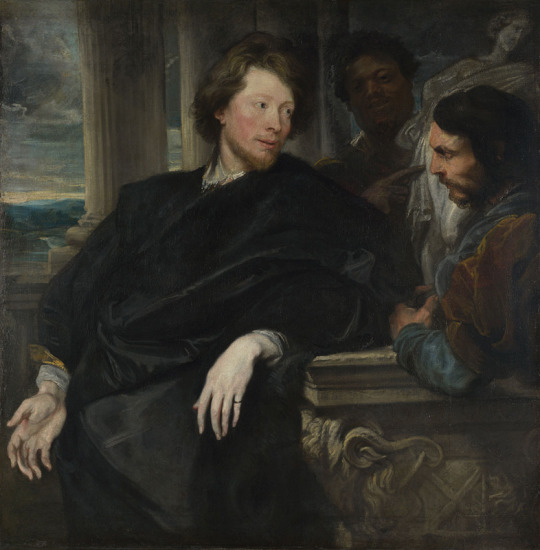
The Spanish cleric, Don Justino de Neve, by Bartolomé Esteban Murillo, 1665:

Actually, we could pop across the Channel to the Rijksmuseum in Amsterdam and look at these two extremely solid Dutch citizens, painted by by Joos van Celve in 1518 and Maarten van Heemskerck in 1529 respectively:
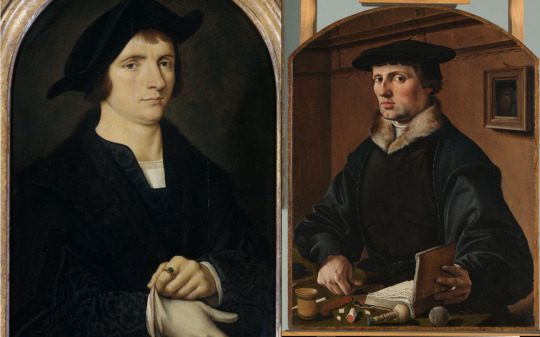
And how could I ever forget the Nobleman with Hand on Heart, by El Greco, in the Prado of Madrid, about 1575-1580:

Actually, let's skip back for a moment to this rather lovely geometric and floral moonscape of a patterned robe and gown ensemble, which I don't have a lot to say about:

And then admire the splendid sleeve of Gerolamo Barbarigo, by Titian, 1510:

Finally, the classic luxury black with white linen glimpsed at the throat has always been at least potentially a unisex style, and so I cannot resist showing you Hans Holbein the Younger's absolute bombshell of a masterwork: Christina of Denmark, Duchess of Milan, 1538. A widow, fifteen years old.

Holbein was a truly wonderful painter and I especially admire his portraits of women (look at this one!) for the way he makes us look completely real, normal, subjective and autonomous and also incredibly sexy, although his portraits of men are occasionally just as stunning (Kunsthistoriches Museum, Vienna). Here, he has painted a dimple in the act of appearing, because he was just that good. This portrait is close to life-size, it's in the National Gallery in London and if you ever get the chance to stand in front of it, do.
The DFQC costumes master post is here.
#love between fairy and devil#cang lan jue#costumes#lbfad#cdrama#cdrama visual world#western art history
49 notes
·
View notes
Text



John Constable RA (1776-1837)
'Wivenhoe Park, Essex' (1816)
Widener Collection, National Gallery of Art, Washington DC, USA.
'The Lock' (1824)
Collection of Carmen Thyssen-Bornemissa, On Loan to the Thyssen-Bornemissa Museum, Madrid, Spain.
'Chain Peer, Brighton, East Sussex' (1827)
Tate Britain, Pimlico, London, UK.
3 notes
·
View notes
Video
Karsten, Ludvig (1876-1926) - 1924 Pork (Private Collection) by Milton Sonn Via Flickr: Oil on canvas. Ludvig Karsten was a Norwegian painter. He was a neo-impressionist influenced by Edvard Munch, Henri Matisse and the contemporary French painting. He first participated at the Autumn exhibition in Kristiania in 1901, and had his first separate exhibition in 1904. He is represented at museums in many Scandinavian cities, and with several paintings at the National Gallery of Norway. Karsten was known for his bohemian lifestyle and pending temper. Karsten grew up in a wealthy home in Christiania. He started taking drawing lessons 13 years old. In 1893 he made a study tour to Telemark, where he made landscape sketches and portraits, and also joined painter Halfdan Egedius. After graduating from secondary school in 1895, he travelled to Rome, and later to Firenze and Munich. In 1896 he travelled in Spain, and settled for a while in Madrid. He left Spain in 1898, and was enrolled in the military services at Gardermoen for some months. He then travelled to Munich, where he painted En mann og en kvinne, also called Adam and Eve, which has later been located at the Stenersen Museum. He visited Paris in autumn 1900, where he trained on models. In 1901 he was in Åsgårdstrand, where he painted Two Men and Three Boys, which were both shown at his first appearance at the Autumn exhibition in Kristiania in 1901. Karsten returned to Paris, where he spent several years. He was known for his boozing and temperament. After a fight with the poet Nils Collett Vogt he was temporarily expelled from the circle of Norwegian artists residing in Paris. He visited the museum Louvre, where he paraphrased Ribera's painting of the burial of Christ. The painting was bought by Frits Thaulow, and came to be Karsten's the first important sale. It was resold to the National Gallery in Oslo in 1909, after Thaulow's death. Karsten's first separate exhibition, at Blomqvist in Kristiania in September and October 1904, received mixed critic in the newspapers. In 1905 he visited Edvard Munch at Åsgårdstrand, where Munch made a large portrait of him. After a night of heavy drinking, possibly on Midsummer Eve, it came to quarrel which led to a violent fight between Munch and Karsten. Munch later made an etching of his version of the incident. From 1910 Karsten lived mostly in Copenhagen, where he married in 1913. He bought a house in Skagen in 1920. Karsten is represented at the National Gallery of Norway with several paintings, including Kristi gravleggelse from 1904, Vårkveld i Ula from 1905, Tæring from 1907, Det blå kjøkken (English: The blue Kitchen) from 1913, Det røde kjøkken (English: The red Kitchen) from 1913, and Flukten fra Egypt from 1922. He is represented at the Bergen Museum (with Søsken, and Batseba), at Nationalmuseum in Stockholm (with the painting Den lyse og mørke akt), at Statens Museum for Kunst in Copenhagen (with Golgata from 1923), and at the Stenersen Museum in Oslo (with the paintings Adam og Eva and Gobelin). Karsten was also well known for his paraphrases of works by elder painters, including 16th century artist Jacopo Bassano and 17th century artists Jusepe de Ribera and Rembrandt. His last painting was a portrait of his daughter Alise, when she visited him in Paris in 1926. He died in Paris in 1926, after having fallen down a steep staircase.
3 notes
·
View notes
Text

Clara Peeters • Still Life with Nuts, Candy and Flowers • c. 1611-12 • Museo del Prado - Madrid, Spain
Clara Peeters was one of the few female artists of her time to achieve recognition for her work. She was celebrated for her intricate attention to detail, as well as her ability to create textures and reflections that bring the objects to life. ~ National Gallery, London
#clara peeters#woman painter#woman artist#17th century art#still life#painting#fine art#artwork#art#flemish painter#making room blog
18 notes
·
View notes
Photo

Juan Laurent (1816-1886, photographer) Patio of the Acequia in the Generalife, Granada c. 1881 Albumen silver photograph Madrid: J. Laurent (firm)
National Gallery of Art Library, Department of Image Collections
via: Art Blart
65 notes
·
View notes
Text
Stats 2: Electric Boogaloo
Our 256 works are comprised of.... 132 paintings, 36 drawings / digital artworks / comics, 26 installation pieces, 20 sculptures, 11 buildings, 11 public artworks, 10 photographs, 4 prints, 3 cave arts, 2 textile arts, and 1 thing I classified as a collage instead of anything else!
More stats below!
Most popular city: New York, with 13 pieces, followed by Paris with 8, and Chicago is third with 7! Washington DC has 6, Florence, Madrid, and London all have 5, Philadelphia has 4, Dublin, Edinburgh, Mexico City each have three, and all the following cities have two: Boston, Cairo, Calgary, Cordoba, Helsinki, Houston, Jerusalem, Los Angeles, Munich, Ottawa, Prague, Vienna, Warsaw
Most popular museum: somehow the Art Institute of Chicago has the most with 6 pieces! Followed by the Museum of Modern Art with 5 pieces! The Museo del Prado has 4, the Philadelphia Museum of Art has 3, and the Ateneum, Louvre, Metropolitan Museum of Art, Museo Dolores Olmedo, National Gallery of Canada, Solomon R. Guggenheim Museum, Tate Britain, Tretyakov Gallery, and the Uffizi Gallery each have 2! In addition, the single works are spread out amongst 16 city level galleries (ie the Phoenix Art Museum), 5 state/provincial (ie Queensland Art Gallery), 25 national (ie National Gallery Prague), 8 museums named after benefactors (ie the Hirshhorn Museum), 7 museums dedicated to a specific artist (ie the Van Gogh Museum) and numerous other institutions! Churches, palaces, increasingly specific museums, museums that are named after their location rather than their governmental level... and of course a whole lot of private collections and pieces we were unable to find the location of!
Countries! 50 pieces are in the US! 13 in France! 12 in Spain! 7 in England, 6 in Canada and Italy, 5 in Russia, 4 in Ireland, Mexico, and Australia, 3 each in Germany, Austria, and Scotland, and 2 each in China, the Netherlands, Israel, Finland, Wales, Poland, Japan, Egypt, and India, and 1 each in Portugal, Ecuador, Thailand, Singapore, Belgium, Argentina, Sweden, the Czech Republic, Norway, Bangladesh, Saudi Arabia, and the Vatican!
Demographics! I revoked John Singer Sargents American status for these because he was born in Europe, and spent most of his life travelling around Europe. I tried my best to track down the correct numbers but honestly some of these are likely to be slightly off. I went with easily publicly available information like Wikipedia and where that failed the author's website. I also tracked people's birth countries in addition to where they lived / worked for most of their lives. Anyway! We have 74 pieces by American artists! 27 French, 22 English, 14 Russian, 13 Spanish, 11 Canadian, 9 Italian, 8 Chinese, 8 German, 6 Irish, 6 Polish, 6 Mexican, 5 Greek (four of those are Ancient Greece), 5 Ukrainian, 5 Japanese, 4 Australian, 4 Belgian, 4 Indian, 3 Serbian, 3 Armenian, 3 Dutch, 3 Austria, 3 Latvian, 3 Swedish, 2 each from Finland, Scotland, Malaysia, Cuba, the Czech Republic, and Norway, and one each from Israel (specifically), Portugal, Ecuador, Thailand, Switzerland, Denmark, Iran, Colombia, Chile, Estonia, and Egypt (albeit Ancient Egypt)
Including the one Israeli artist, we have 7 Jewish artists represented, as well as 4 Black, 6 Indigenous (one is half Kichwa, one is Sami, one is Haida, one is Ojibwe, and two are Australian Aboriginals. One of those is Kokatha and Nukunu, and the other one was a group project with eight artists who did the majority of the work, and 6 of those are from Erub Island but the articles did not specify further except that at least one of the eight is non-Indigenous), 1 Chicana, and 1 Asian-American (which I am specifying because I felt very stupid adding tallies to an Asian column when I already said there are 8 Chinese artists and 5 Japanese and 2 Malaysians and....). We also do have 16 artists that publicly identify as queer in some fashion! I have listed 9 works by gay men, 2 works by lesbians, and 5 that have chosen to use "queer" instead of other labels.
And on that note.... we have 155 works by men, 51 by women, and 2 by nonbinary artists!
Most represented artists! Frida Kahlo and René Magritte tied with four works each! Félix González-Torres, Francisco Goya, John Singer Sargent each have three! And the artists that have 2 artworks each are... Claude Monet, Dragan Bibin, Edmund Blair Leighton, Francisco de Zurbarán, Gustav Klimt, Holly Warburton, Hugo Simberg, Ilya Repin, Ivan Aivazovsky, Jacques-Louis David, Jenny Holzer, Louis Wain, Pablo Picasso, Sun Yuan & Peng Yu, Victo Ngai, Vincent van Gogh, Pierre-Auguste Renoir, and Leonardo da Vinci (although the second is debated attribution)! That means that 205 of the works are not by any of the above! Some have unknown artists (we've got THREE CAVE ARTS) but most are just... really varied!
And lastly, years painted (as sorted by year finished and not year started). Who else loves when something is listed as "13th century"?? Not me, that's who. This is going to be a lot of numbers, and there's no real way to make it more readable. so..... feel free to skip!
The oldest two submissions are from circa 40,000 years before present, and 30 to 32 thousand years before present! Six more artworks came to exist before 0 (CE or AD depending on who you're talking to), and 7 before 1000! 2 from the 1200s, 6 from the 1400s, 8 from the 1500s, 3 from the 1600s, and 5 from the 1700s! Several of those already listed were started in a previous ....age category (for instance, one has no specified date other than 7300 BC to 700 AD) but once we hit 1600, everything is usually finished in a relatively short timespan. 6 are from 1800-1850, 9 from 1850-1880, and the 1880s are extremely busy. 1 from 1881, 3 from 1882, 1 from 1883-1885, 5 from 1886, and two each from the next four years (1887-1890)! 6 from 1891-1895, and 5 from 1896-1900!
We've got 3 from 1901 or 1902, 4 from 1903, two each from 1906 and 1907, and one each from 1908 and 1909! 3 from 1910-1915, 3 from 1917, 2 from 1918 and one from 1919! 6 are from the Roaring Twenties, three of them specifically from 1928! 4 from 1931-1935, and only 3 from the latter half of the 30s! There's 3 from WWII, and 4 from 1946-1949, 5 from 1951-1954 but only 3 from '55-'59. 5 from the sixties, 7 spread out through the 70s, and 10 from the 80s, two each from 81, 82 and 84. The 90s have a lot of duplicate and triplicate years, totaling 20 overall! 11 are from 90-95, the other 9 are 96-99. 7 from 2001-2005, and 8 from 2006-2009. 9 from 2010-2014, 3 from 2015, 6 from 2016, 5 from 2017, 1 from 2018, 3 from 2019, 5 from 2020, 1 from 2021, 4 from 2022, 11 from 2023, and 3 ongoing projects! Whew! If anyone wants it listed By Year instead of in groups like this, that'll be most readable in like... list form and that's way too long for a stats post.
Congrats on making it to the end! If you got this far, uh, let me know if you want to see the spreadsheet after the tournament, I guess. I'm very proud of it.
50 notes
·
View notes
Text

MWW Artwork of the Day (4/18/24) Marinus Claeszon van Reymerswaele (Flemish, 1495-1567) Two Tax Collectors (c. 1540-50) Oil on panel, 82 x 56 cm. National Museum, Warsaw
There are about thirty versions of the "Tax Gatherers" (the best is in London, National Gallery; another has the date 1552), and what nobody has so far explained is why so many people should want to own a picture of tax collectors (and excessively ugly ones at that) gloating over their imposts. Little is known about the painter except that he worked in the Spanish Netherlands (Flanders), that his works were not many, and that he limited himself to themes better-known through his more productive contemporary, Quentin Metsys. The Prado in Madrid, where one can view this canvas, is the best place to visit if you're interested in the Flemish art of this period.
5 notes
·
View notes
Photo









Didier Hamey was born in 1962 in Dunkirk where he grew up. He likes to cite his origins and one cannot help thinking, seeing his work, of the moment of madness that takes hold of this city during "Carnival", which he never misses.
His workshop is now in Saou in the Drôme where he lives.He exhibits in several galleries in France and abroad.
His work appears in many private and public collections: the National Fund for Contemporary Art, the National Library, the Gravelines Engraving Museum.
He has just made a beautiful retrospective exhibition of his engraved work at the Museum of Print in Gravelines and a residency at the Casa de Velasquez in Madrid.
https://www.artsper.com/.../conte.../france/561/didier-hamey
19 notes
·
View notes
Note
List 5 things that make you happy, then put this in the askbox for the last 10 people who reblogged something from you! (ू•‧̫•ू⑅)♡
Thank you for the ask! Already done this but I got a few to answer so here’s another 5
1. Art!! I love everything about it and it means everything to me. Writing, drawing, painting, the myriad of other ways to create. The act of creation is really a defining human experience, that aren’t we all so lucky to enjoy. Here’s a few of my fave recent pieces from visits to my states National Gallery - Pierre Bonnard ‘Danseuses ou Le Ballet 1896’ and Félix Vallotton ‘Le Ballon 1899’, plus a bonus excerpt of ‘The Letters of Vincent van Gogh’ that I have adored for a long time “j'ai la nature et l'art et la poésie, et si cela ne suffit pas, qu'est-ce qui suffit?”



2. Reading 📖 There is nothing that makes me happier than escaping into someone else’s words. Here’s my accidental rainbow stack of library books for the month 🌈📚 How my requests always have a knack for coming in at the same time is a great mystery. The likelihood of me completing this stack in 3 weeks is also slim but I’m sure gonna try. The two I’m anticipating most are Yellowface and Talking at Night 💛🧡

3. Matcha 🍵 I could solely drink it as my only beverage for the rest of time
4. Sports. My first and greatest love. The feeling of watching a team or athlete compete brings me immense joy, and it’s even better when they win!! Here’s some of my favourite sporting moments: Real Madrid and mi eterno capitán, getting the elusive ‘La Decima’ UCL and Rafael Nadal winning his 14th French Open 🏆 The tears of happiness I wept for both these moments are immeasurable 😭💗


5. and lastly, it’s about to be the weekend here :)
2 notes
·
View notes